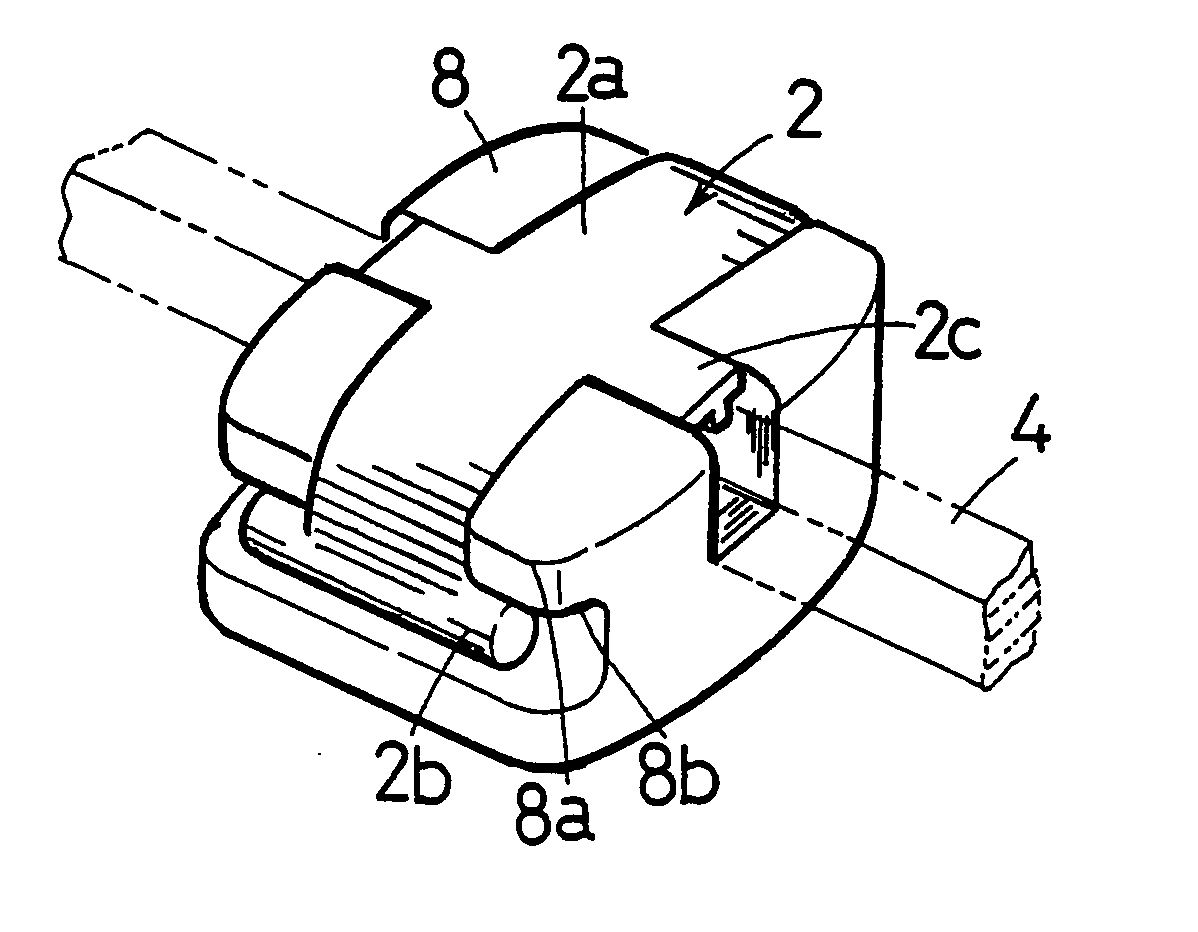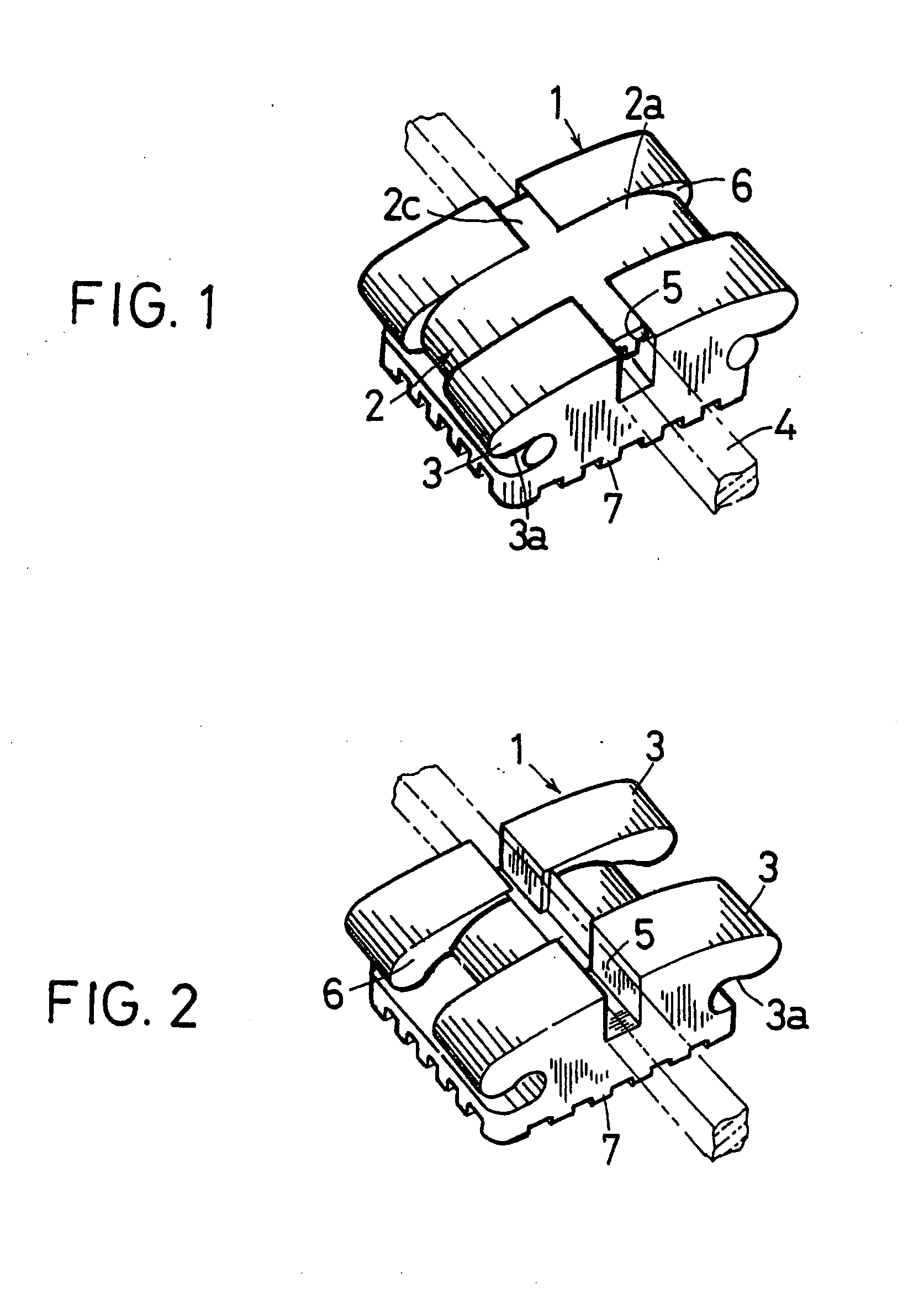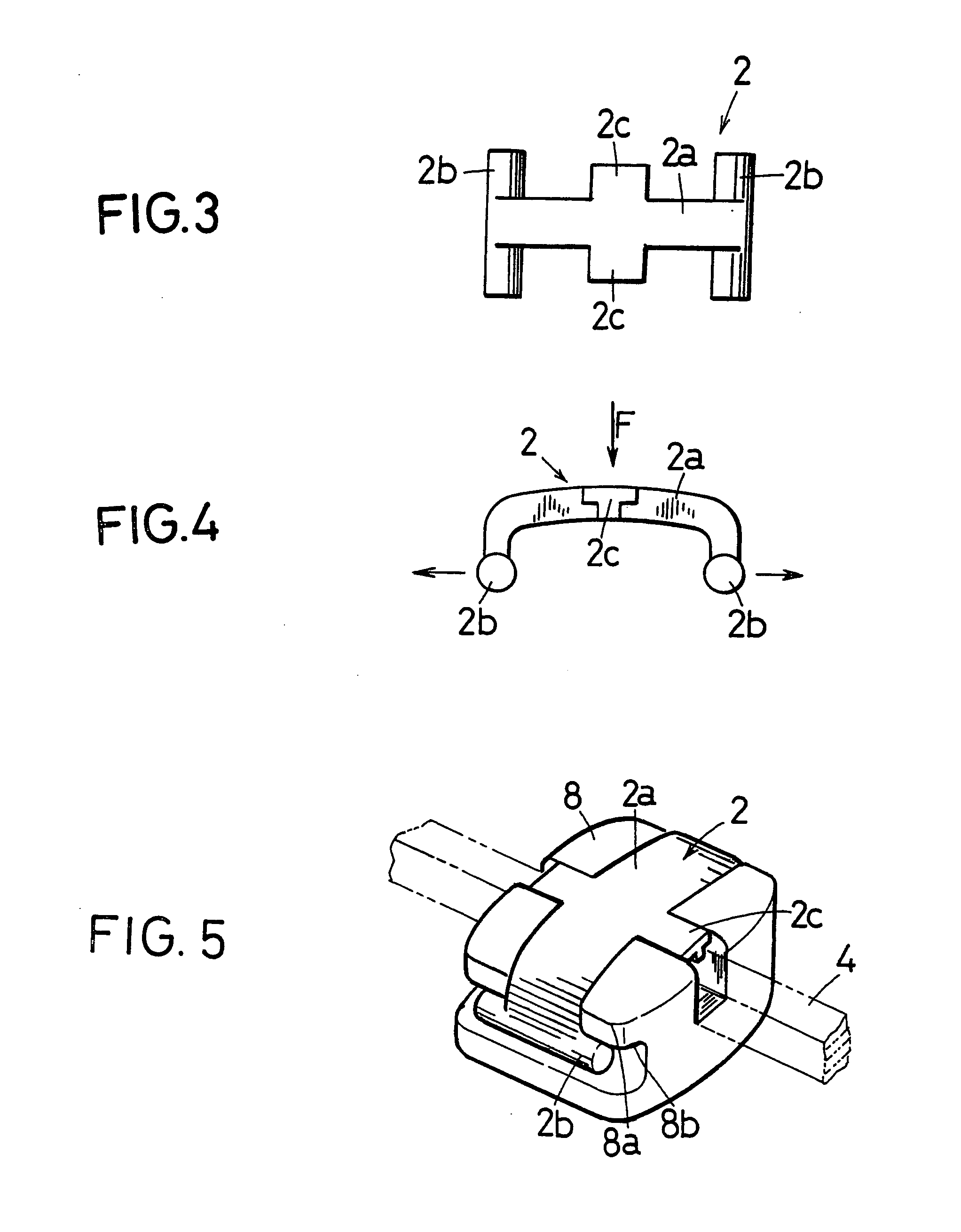Orthodontic wire ligating member
- Summary
- Abstract
- Description
- Claims
- Application Information
AI Technical Summary
Benefits of technology
Problems solved by technology
Method used
Image
Examples
Embodiment Construction
s]
[0077] The operation / working-effect of the embodiments detailed above may be summarized as follows. The wire securing methods using the conventional ligating members are complicated and require the orthodontist to have highly proficient skill in ligating. In contrast, the orthodontic wire ligating member according to any of the embodiments of the present invention enables the treatment to be finished in a reduced period of time and moreover allows orthodontic pain inflicted on the patient to be reduced to a considerable extent. The bracket configuration is not restricted to the conventional ones. However, the use of an optimal bracket configuration conformable to the ligating members according to the embodiments enables the effect of the orthodontic treatment to be improved furthermore.
[0078] Existing conventional devices capable of manifesting an effective corrective force when used for tooth movement are designed on the assumption that an archwire, an elastic chain, a coil sprin...
PUM
 Login to View More
Login to View More Abstract
Description
Claims
Application Information
 Login to View More
Login to View More - R&D
- Intellectual Property
- Life Sciences
- Materials
- Tech Scout
- Unparalleled Data Quality
- Higher Quality Content
- 60% Fewer Hallucinations
Browse by: Latest US Patents, China's latest patents, Technical Efficacy Thesaurus, Application Domain, Technology Topic, Popular Technical Reports.
© 2025 PatSnap. All rights reserved.Legal|Privacy policy|Modern Slavery Act Transparency Statement|Sitemap|About US| Contact US: help@patsnap.com



